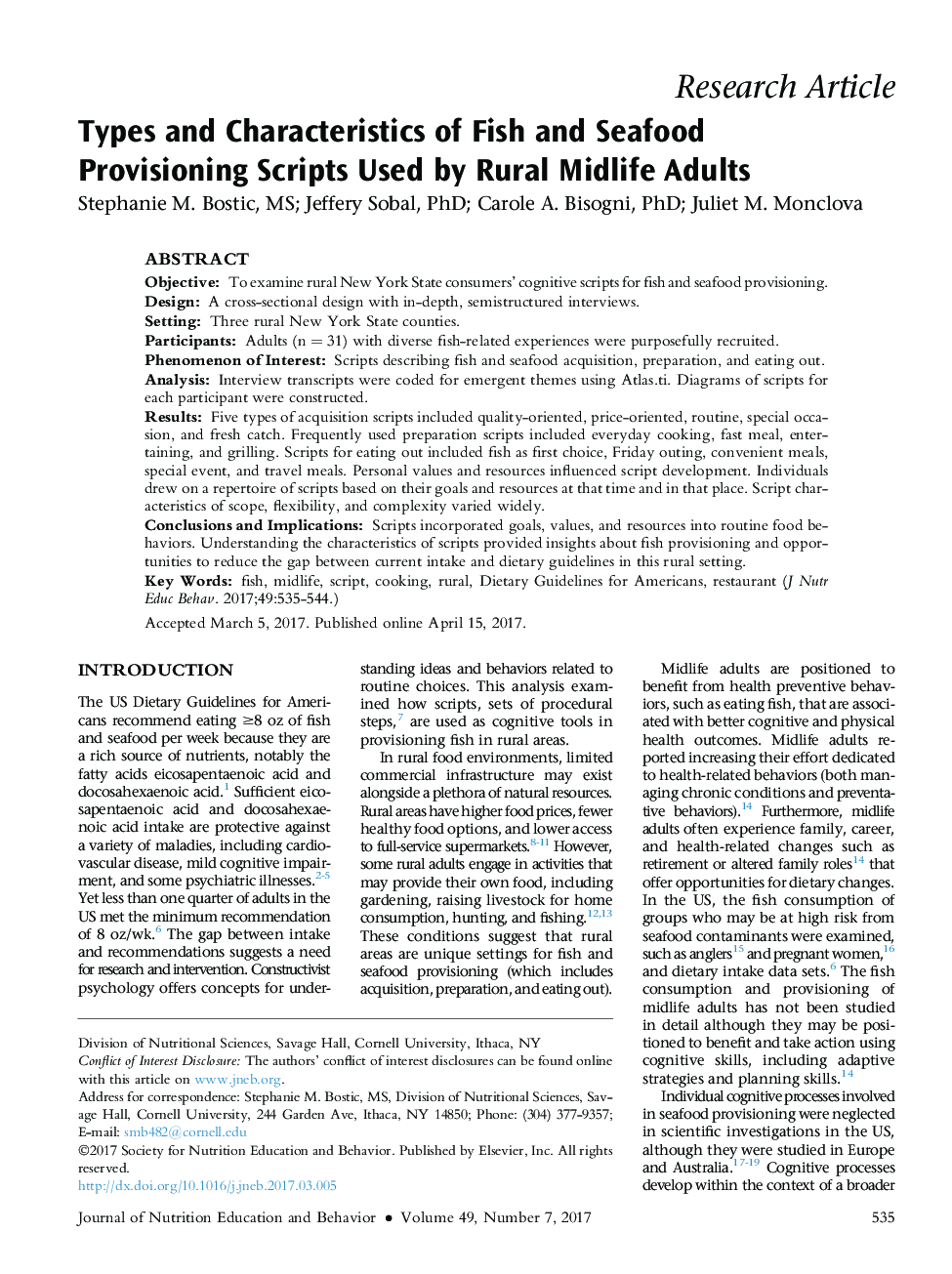| کد مقاله | کد نشریه | سال انتشار | مقاله انگلیسی | نسخه تمام متن |
|---|---|---|---|---|
| 4939519 | 1363721 | 2017 | 11 صفحه PDF | دانلود رایگان |
ObjectiveTo examine rural New York State consumers' cognitive scripts for fish and seafood provisioning.DesignA cross-sectional design with in-depth, semistructured interviews.SettingThree rural New York State counties.ParticipantsAdults (n = 31) with diverse fish-related experiences were purposefully recruited.Phenomenon of InterestScripts describing fish and seafood acquisition, preparation, and eating out.AnalysisInterview transcripts were coded for emergent themes using Atlas.ti. Diagrams of scripts for each participant were constructed.ResultsFive types of acquisition scripts included quality-oriented, price-oriented, routine, special occasion, and fresh catch. Frequently used preparation scripts included everyday cooking, fast meal, entertaining, and grilling. Scripts for eating out included fish as first choice, Friday outing, convenient meals, special event, and travel meals. Personal values and resources influenced script development. Individuals drew on a repertoire of scripts based on their goals and resources at that time and in that place. Script characteristics of scope, flexibility, and complexity varied widely.Conclusions and ImplicationsScripts incorporated goals, values, and resources into routine food behaviors. Understanding the characteristics of scripts provided insights about fish provisioning and opportunities to reduce the gap between current intake and dietary guidelines in this rural setting.
Journal: Journal of Nutrition Education and Behavior - Volume 49, Issue 7, JulyâAugust 2017, Pages 535-544.e1
